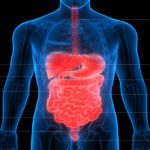Surgery for stomach cancer is part of the treatment for many different stages of stomach cancer if it can be done. If a patient has a stage 0, I, II, or III cancer and is healthy enough, surgery (often along with other treatments) offers the only realistic chance for cure at this time.

Read more on treatment of stomach cancer.
Surgery may be done to remove the cancer and part or all of the stomach and some nearby lymph nodes, depending on the type and stage of stomach cancer. The surgeon will try to leave behind as much normal stomach as possible. Sometimes other organs will need to be removed as well.
Even when the cancer is too widespread to be removed completely, patients may be helped by surgery because it may help prevent bleeding from the tumor or prevent the stomach from being blocked by tumor growth. This type of surgery is called palliative surgery, meaning that it relieves or prevents symptoms but it is not expected to cure the cancer.
The type of operation usually depends on what part of the stomach the cancer is in and how much cancer is in the surrounding tissue. Different kinds of surgery can be used to treat stomach cancer:
Endoscopic resection
Endoscopic mucosal resection and endoscopic submucosal resection can be used only to treat some very early-stage cancers, where the chance of spread to the lymph nodes is very low.
These procedures do not require a cut (incision) in the skin. Instead, the surgeon passes an endoscope (a long, flexible tube with a small video camera on the end) down the throat and into the stomach. Surgical tools can be passed through the endoscope to remove the tumor and part of the normal stomach wall around it.
These are not done as much in the United States as they are in countries (like Japan) where stomach cancer is more common and more often found at an early stage due to screening. If you are going to have this kind of surgery, it should be at a center that has experience with this technique.
Subtotal (partial) gastrectomy
This operation is often recommended if the cancer is only in the lower part of the stomach. It is also sometimes used for cancers that are only in the upper part of the stomach.
Only part of the stomach is removed, sometimes along with part of the esophagus or the first part of the small intestine (the duodenum). The remaining section of stomach is then reattached. Some of the omentum (an apron-like layer of fatty tissue that covers the stomach and intestines) is removed as well, along with nearby lymph nodes, and possibly the spleen and parts of other nearby organs.
Eating is much easier after surgery if only part of the stomach is removed instead of the entire stomach.
Total gastrectomy
This operation is done if the cancer has spread throughout the stomach. It is also often advised if the cancer is in the upper part of the stomach, near the esophagus.
The surgeon removes the entire stomach, nearby lymph nodes, and omentum, and may remove the spleen and parts of the esophagus, intestines, pancreas, or other nearby organs. The end of the esophagus is then attached to part of the small intestine. This allows food to move down the intestinal tract. But people who have had their stomach removed can only eat a small amount of food at a time. Because of this, they must eat more often.
Most subtotal and total gastrectomies are done through a large incision (cut) in the skin of the abdomen. In some centers, they can be done using laparoscopy, which allows the stomach to be removed through several smaller cuts in the abdomen. Although this approach shows promise, many doctors feel that this needs to be studied further before it can be considered a standard treatment for stomach cancer.
Placement of a feeding tube
Some patients have trouble taking in enough nutrition after surgery for stomach cancer. Further treatment like chemotherapy with radiation can make this problem worse. To help with this, a tube can be placed into the intestine at the time of gastrectomy. The end of this tube, called a jejunostomy tube or J tube, remains outside of the skin on the abdomen. Through this, liquid nutrition can be put directly into the intestine to help prevent and treat malnutrition.
Lymph node removal
In either a subtotal or total gastrectomy, the nearby lymph nodes are removed. This is a very important part of the operation. Many doctors feel that the success of the surgery is directly related to how many lymph nodes the surgeon removes.
In the United States, it is recommended that at least 15 lymph nodes are removed (called a D1 lymphadenectomy) when a gastrectomy is done. Surgeons in Japan have had very high success rates by removing even more lymph nodes near the cancer (called a D2 lymphadenectomy).
Surgeons in Europe and the United States have not been able to equal the results of the Japanese surgeons. It is not clear if this is because Japanese surgeons are more experienced (stomach cancer is much more common in their country), because Japanese patients tend to have earlier stage disease (because they screen for stomach cancer) and are healthier, or if other factors play a role.
In any event, it takes a skilled surgeon who is experienced in stomach cancer surgery to remove all the lymph nodes successfully. Ask your surgeon about his or her experience in operating on stomach cancer. Studies have shown that the results are better when both the surgeon and the hospital have had extensive experience in treating patients with stomach cancer.
Read more on complications arising out of surgery for stomach cancer.
Palliative surgery for unresectable cancer
For people with unresectable stomach cancer, surgery can often still be used to help control the cancer or to help prevent or relieve symptoms or complications.
Subtotal gastrectomy: For some people who are healthy enough for surgery, removing the part of the stomach with the tumor can help treat problems such as bleeding, pain, or blockage in the stomach, even if it does not cure the cancer. Because the goal of this surgery is not to cure the cancer, nearby lymph nodes and parts of other organs usually do not need to be removed.
Gastric bypass (gastrojejunostomy): Tumors in the lower part of the stomach may eventually grow large enough to block food from leaving the stomach. For people healthy enough for surgery, one option to help prevent or treat this is to bypass the lower part of the stomach. This is done by attaching part of the small intestine (the jejunum) to the upper part of the stomach, which allows food to leave the stomach through the new connection.
Endoscopic tumor ablation: In some cases, such as in people who are not healthy enough for surgery, an endoscope (a long, flexible tube passed down the throat) can be used to guide a laser beam to vaporize parts of the tumor. This can be done to stop bleeding or help relieve a blockage without surgery.
Stent placement: Another option to keep a tumor from blocking the opening at the beginning or end of the stomach is to use an endoscope to place a stent (a hollow metal tube) in the opening. This helps keep it open and allows food to pass through it. For tumors in the upper (proximal) stomach, the stent is placed where the esophagus and stomach meet. For tumors in the lower (distal) part of the stomach, the stent is placed at the junction of the stomach and the small intestine.
Feeding tube placement: Some people with stomach cancer are not able to eat or drink enough to get adequate nutrition. A minor operation can be done to place a feeding tube through the skin of the abdomen and into the distal part of the stomach (known as a gastrostomy tube or G tube) or into the small intestine (jejunostomy tube or J tube). Liquid nutrition can then be put directly into the tube.
Possible complications and side effects of surgery
Surgery for stomach cancer is difficult and can have complications. These can include bleeding from the surgery, blood clots, and damage to nearby organs during the operation. Rarely, the new connections made between the ends of the stomach or esophagus and small intestine may leak.
Surgical techniques have improved in recent years, so only about 1% to 2% of people die from surgery for stomach cancer. This number is higher when the operation is more extensive, such as when all the lymph nodes are removed, but it is lower in the hands of highly skilled surgeons.
You will not be allowed to eat or drink anything for at least a few days after a total or subtotal gastrectomy. This is to give the digestive tract time to heal and to make sure there are no leaks in parts that have been sewn together during the operation.
You may develop side effects after you recover from surgery. These can include nausea, heartburn, abdominal pain, and diarrhea, particularly after eating. These side effects result from the fact that once part or all of the stomach is removed, food enters the intestines too quickly after eating. The side effects often get better over time, but in some people they can last for a long time. Your doctor might prescribe medicines to help with this.
Changes in your diet will be needed after a partial or total gastrectomy. The biggest change is that you will need to eat smaller, more frequent meals. The amount of stomach removed will affect how much you need to change the way you eat.
The stomach helps the body absorb some vitamins, so people who have had a subtotal or total gastrectomy may develop vitamin deficiencies. If certain parts of the stomach are removed, doctors routinely prescribe vitamin supplements, some of which can only be injected.
Before your surgery, ask your surgeon how much of the stomach is going to be removed. Some surgeons try to leave behind as much of the stomach as they can to allow patients to eat more normally afterward. The tradeoff is that the cancer might be more likely to come back. The extent of the surgery should be discussed with your doctor before it is done.
It cannot be stressed enough that you should make sure your surgeon is experienced in treating stomach cancer and able to perform the most up-to-date operations to reduce your risk of complications.



